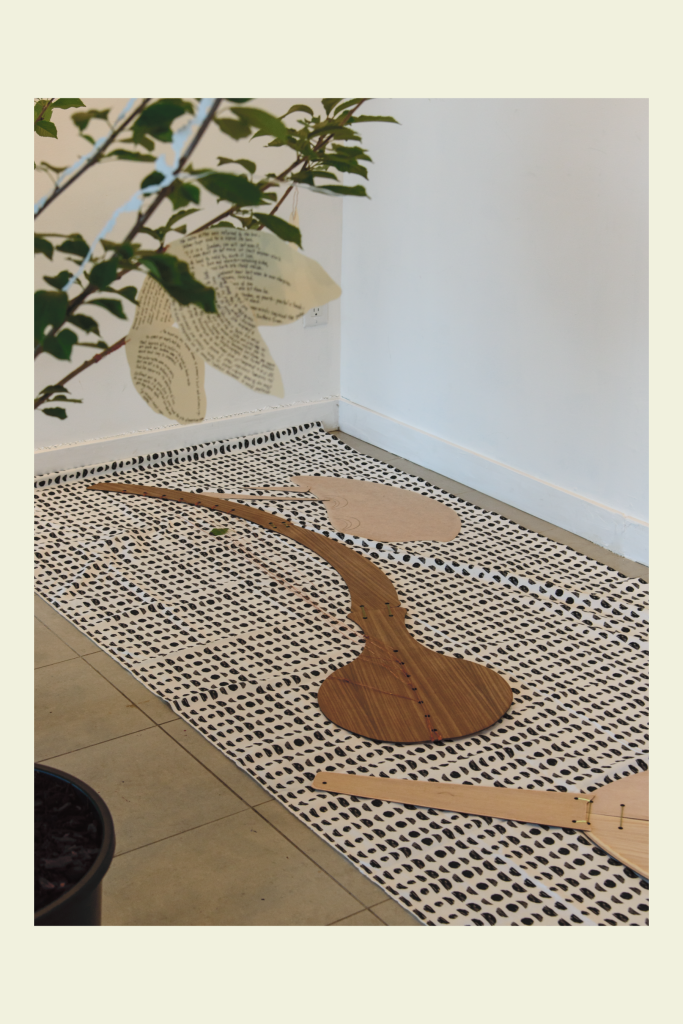A cherry tree grove decorated with hand-written poems and grape leaf cut-outs was installed in the gallery of International Arts Academy from June 30th to July 30th, 2023.
Inside the Gallery:
The indoor trees are animated with a voice recording of the artist and her sister reciting the artist’s poetry. A poem in Centaur font spans posters over one wall and three adjacent walls.

There were Grapes in the Nile
In this inter–media installation, a recording of the artist and her sister reciting a duo–spoken word poetry composition by the artist is played on loop from a grove of cherry saplings set-up in the center of the gallery.
The trees are ornamented with paper grape leaves and with paper grape vines in blossom. From a closer perspective, hand–written poems are legible on the paper cut–outs of magnified grape blossoms, attached to the saplings’ branches with copper wire.




View Tree-Poems from Maneros :
The poems on the grape blossom ornaments, composed by the artist, are echoed in the recording of a duo–recitation with her sister, amplified from the grove’s center. The grape blossom cut–outs on the vine are the material concretization of ancient Egyptian memories while the hand–written poems are symbolic of legends that are remembered as spoken word.


Read Poetry Script of Sound Recording :
The recorded speakers reciting are the poet and her sister. The sound design aspect of this piece was recorded at the studio Table Tudors DJ Community in Burnaby.
Recorded voices:
Sylvia & Savannah Oriente Horricks

Laser cut-outs in plywood of a medieval Neapolitan mandolin, an ancient Greek gaida and an ancient Egyptian harp are displayed on black and white printed cloth behind the grove of cherry trees, as an instrumental trio to accompany the saplings: trees that appear to be reciting poetry.
In ancient Egyptian literature, grapes had the symbolic value of blood. The poetry conveys tension and the stirring anticipation of disaster in a mood of collective uncertainty. The grape blossom cut–outs, a stylization of this fruit at its early stage of ripening, are symbolic of conflict, as it escalates from a phase of gradual development, explained in the poems written on these paper cut-outs.






Maneros, the first Egyptian Hymn
Maneros was an early Egyptian noble from Herodotus’ The Histories whose memory in literature is associated with a brief summer.

A poem written in giant type across posters spans the length of a wall and continues over three adjacent walls that form an alcove harboring a grove of saplings. The poem describes Sekhmet — goddess of war, pestilence and immunization — sending a plague of moths to act as a calamity on enemy land. In the poem, moths stray from Sekhmet’s plague, gather at an abandoned harp and proceed to land on the instrument’s note–points to silently play the hymn Maneros, as a visual description of the onset of impending ruin.
The hymn Maneros was sung, according to Herodotus, by the Egyptian people in mourning after the premature departure of Maneros, the son of Min, an early Egyptian king. This hymn branched into various similar versions, including Linus Song and the Greek song Hylas.
